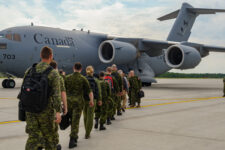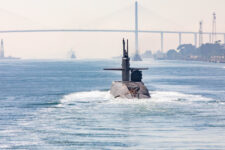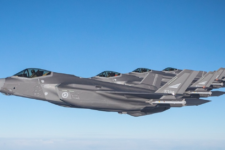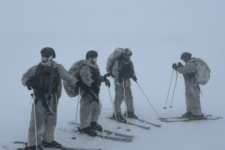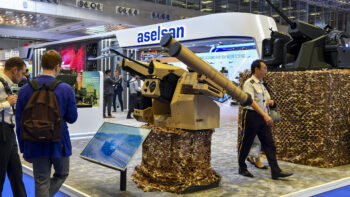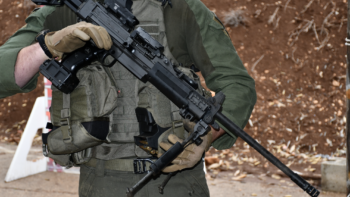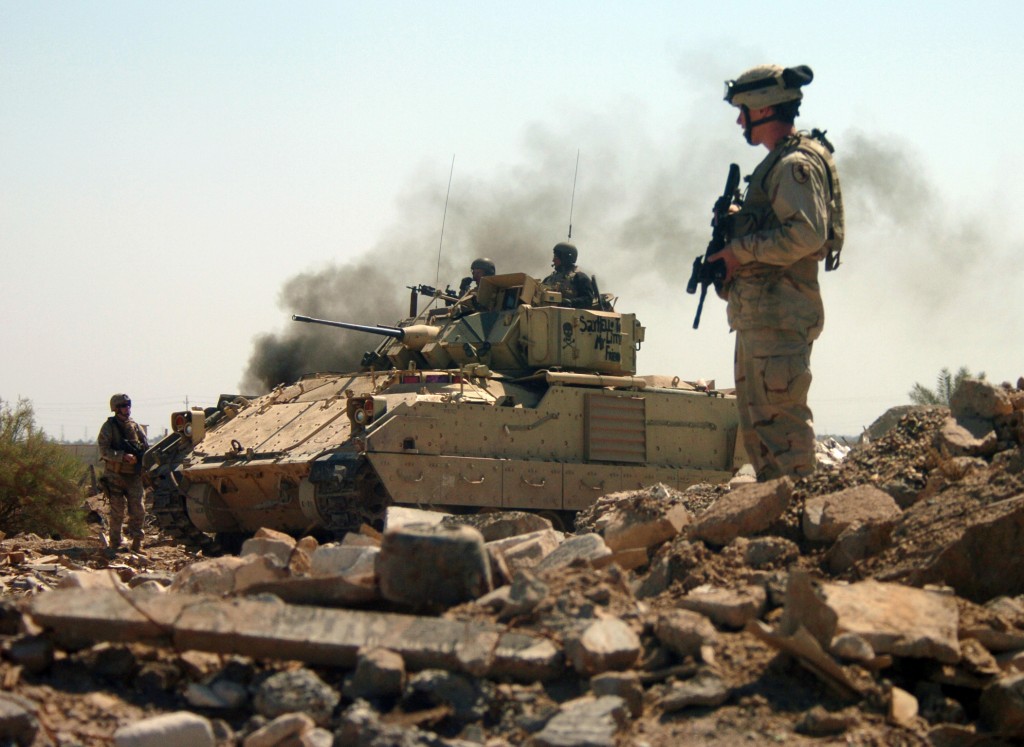
The Army won’t be able to replace its ’80s-vintage M2 Bradleys, like the one shown here in Iraq, for years to come.
PENTAGON: Do we still need a big Army that can wage big wars? Hell yes, the Army generals say. Will the Army get a new Ground Combat Vehicle to replace the 1981-vintage Bradley Fighting Vehicle that currently carries foot troops into battle? Probably not for a long, long time.
That’s my assessment based on an exclusive interview with two two-star generals and a senior Army civilian: the director of the Army office supporting the Quadrennial Defense Review, Maj. Gen. John Rossi; the G-8’s director of “force development,” Maj. Gen. Robert Dyess; and the director of the Army’s QDR office, Timothy Muchmore.
“There’s still a requirement out there to defeat a large ground army,” Maj. Gen. Rossi said. “It’s a deterrent. The ground force is going to be the singular force capable of what we term ‘regime change.'”
Wait, “regime change”? I asked. Isn’t that the phrase the now-reviled Don Rumsfeld used to describe the US invasion of Iraq?
“I don’t know if you can find another term for it,” Rossi replied.
“We’ve had this discussion in the corridors of the Pentagon,” added Muchmore, the senior civilian. Whatever politically correct term we end up using, he said, “I want to make sure our potential adversaries hear ‘regime change,’ because that has deterrent value.”
But the Army is going to have to deter and defeat future enemies with its current weapons, albeit modestly upgraded. “In the next few years, are we capable of having an Army that doesn’t look like it does today, with new technology, new equipment? I don’t think so,” said Maj. Gen. Rossi. “If you go down to the motor pools at Fort Hood five years from now, you’re still going to see [M1 Abrams] tanks and [M2] Bradleys.”
What about the replacement for the Bradley, the better-armored, larger-capacity, higher-tech Ground Combat Vehicle that the Army planned to start entering service in 2017? “We certainly have a requirement for a ground combat vehicle,” said the second general in the room, Maj. Gen. Dyess. “There are certain technologies that we are very interested in in the science and technology area.”
I notice, I said, that you’re saying “science and technology,” not “development” of a specific weapons system, let alone “procurement.”
“You’re pretty good at reading between the lines,” he answered.
A few minutes later, Dyess had moved on to the Army and Marine Corps replacement for (some of) its Humvees and MRAP trucks, the Joint Light Tactical Vehicle. “JLTV is a [weapons] program we’re working very hard to keep in the [budget] program,” he said.
I notice, I said, that you did not say that about the GCV.
“That’s correct.”
Those careful words confirm hints heard elsewhere that the Army is increasingly resigned to putting the GCV on hold, or at least in very slow motion. The two competing contractors, General Dynamics and BAE, both recently passed Preliminary Design Review (PDR) of their work. But neither has physically started building prototypes. That makes it programmatically and politically easier to push GCV back from its current Engineering and Manufacturing Development (EMD) phase to plain old research and development.
In this context, it’s well worth noting that in Gen. Odierno’s blunt testimony to the Senate Armed Services Committee last week, he mentioned GCV only once, in passing, as one of “over 100 acquisition programs” the Army would have to “end, restructure, or delay” under full sequestration. The only other specific example he gave was the Armed Aerial Scout helicopter, which has been in limbo for many months.
By contrast, the other three service chiefs each made a point of emphasizing top-priority new weapons that must be protected from sequester at all costs: the Navy’s SSBN(X) nuclear ballistic missile submarine, the Marine Corps’s Amphibious Combat Vehicle (ACV), and the Air Force’s Joint Strike Fighter, KC-46 tanker, and future Long-Range Strike Bomber.
What about the Army? “We will do modification, mostly, of equipment that we have right now,” said Dyess. The service’s top modernization priority is “the network,” a basket term for a host of small-to-medium programs to upgrade the Army’s electronic command systems. The Army’s current approach is to test promising tech, fit it together in a package called a “capability set,” and then field the upgrades to some of its brigades, with a new capability set going out to a different group of brigades every two years. Large mechanical components such as engines and transmissions will be replaced whenever they wear out. But the new electronic and mechanical components will go into the existing vehicles, some of them manufactured as far back the 1980s. There will be no all-new designs for years to come.
So it seems the Army’s focus is not on procuring new weapons systems in the mid-term between now and 2017, but instead on incremental upgrades in the short-term and potentially game-changing science and technology (S&T) for the long term. That way, they hope, the service’s current equipment won’t get obsolete and radically better technology will be available when the future Army finally has the funds to build an all-new war machine.
“We have a long-term view that we’ll get through this period,” said Maj. Gen. Rossi. “The Army will still be here.”
“It would be easy to sit back and say, woe is us,” Rossi went on. “But we’re not sitting on our hands, saying ‘let’s just get through it…. I don’t see it as ‘a hurricane’s coming, so get in the shelter and we’ll stick our heads out in five years.'”
The Army will still modernize its equipment, still deploy “regionally aligned forces” to build up allies abroad, and, for that matter, still fight in Afghanistan through at least the end of 2014. It’s just that, for the foreseeable future, the only dramatic change the Army will make is to get smaller.
Out of INF, Army deploys Typhon weapon to the Philippines
“This is a significant step in our partnership with the Philippines, our oldest treaty ally in the region,” said Brig. Gen. Bernard Harrington, commanding general of the 1st MDTF.









